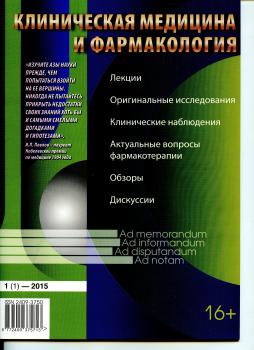Tula, Tula, Russian Federation
Russian Federation
The analytical paper explores the role of percutaneous coronary intervention in the treatment ST elevation myocardial infarction according to studies over the last 5 years. The aim of the study is to consider the sequence of transdermal coronary intervention in the treatment algorithm, the time frame, and the 30-day and 1-year survival rate when using alternative treatments versus transdermal coronary intervention. In conclusion: percutaneous coronary intervention is a priority method of treating acute coronary syndrome with ST segment rise. In patients who found themselves in unaffordable centers for percutaneous coronary intervention, fibrinolysis in situ had a worse prognosis than patient transfer. Fibrinolysis followed by percutaneous coronary intervention is a reasonable alternative when primary percutaneous coronary intervention is not available, especially in patients with early manifestation of symptoms. When comparing patients with timely primary transcutaneous coronary intervention, late reperfusion after ST elevation myocardial infarction leads to reduced myocardial rescue and increased infarction size, hence the time frame is of great importance. In general, patients who underwent percutaneous coronary intervention in interbolinal movement had a higher survival rate for 1 year compared to patients receiving thrombolysis.
percutaneous coronary intervention, ST elevation myocardial infarction, thrombolysis.
1. Artyunov G.P., Akchurin R.S., Aleksyan B.G. pod red. Shlyahto E.V. Kardiologiya. Nacional'noe rukovodstvo - M.; GEOTAR - Media, 2015. - s. 432-447
2. Nifontov E.M., d.m.n., professor, Galagudza M.M., d.m.n., professor, Trusov I.S. Trombolizis - chreskozhnoe koronarnoe vmeshatel'stvo pri ostrom koronarnom sindrome s pod'emom segmenta ST. Zhurnal «Kardiologiya», 2016. - s. 20-25
3. Rekomendacii EOK po vedeniyu pacientov s ostrym infarktom miokarda s pod'emom segmenta ST 2017 - Rossiyskiy kardiologicheskiy zhurnal № 23 (5), 2018. - s. 117-129
4. Arnesen JS, Strøm KH, Bønaa KH, Wiseth R. Treatment of ST-elevation myocardial infarction - an observational study. Tidsskrift for den Norske Laegeforening; tidsskrift for praktisk medicin, ny raekke.. 2019 Nov 18;139(17).
5. Carrillo X, Fernandez-Nofrerias E, Rodriguez-Leor O, Oliveras T, Serra J, Mauri J, Curos A, Rueda F, García-García C, Tresserras R, Rosas A, Faixedas MT, Bayes-Genis A; Codi IAM Investigators. Early ST elevation myocardial infarction in non-capable percutaneous coronary intervention centres: in situ fibrinolysis vs. percutaneous coronary intervention transfer. European Heart Journal 2016 Apr 1;37(13):1034-40.
6. Kim BW, Cha KS, Park MJ, Choi JH, Yun EY, Park JS, Lee HW, Oh JH, Kim JS, Choi JH, Park YH, Lee HC, Kim JH, Chun KJ, Hong TJ, Ahn Y, Jeong MH. The impact of transferring patients with ST-segment elevation myocardial infarction to percutaneous coronary intervention-capable hospitals on clinical outcomes. Cardiology Journal. 2016;23(3):289-95.
7. Roule V, Ardouin P, Blanchart K, Lemaitre A, Wain-Hobson J, Legallois D, Alexandre J, Sabatier R, Milliez P, Beygui F. Prehospital fibrinolysis versus primary percutaneous coronary intervention in ST-elevation myocardial infarction: a systematic review and meta-analysis of randomized controlled trials. Critical Care (London, England) 2016 Nov 5;20(1):359.
8. Siddiqi TJ, Usman MS, Khan MS, Sreenivasan J, Kassas I, Riaz H, Raza S, Deo SV, Sharif H, Kalra A, Yadav N. Meta-Analysis Comparing Primary Percutaneous Coronary Intervention Versus Pharmacoinvasive Therapy in Transfer Patients with ST-Elevation Myocardial Infarction. American Journal of Cardiology. 2018 Aug 15;122(4):542-547.
9. Siontis KC, Barsness GW, Lennon RJ, Holmen JL, Wright RS, Bell MR, Gersh BJ. Pharmacoinvasive and Primary Percutaneous Coronary Intervention Strategies in ST-Elevation Myocardial Infarction (from the Mayo Clinic STEMI Network). American Journal Cardiology 2016 Jun 15;117(12):1904-10.
10. Stiermaier T, Eitel I, de Waha S, Pöss J, Fuernau G, Thiele H, Desch S.Myocardial salvage after primary percutaneous coronary intervention in patients with ST-elevation myocardial infarction presenting early versus late after symptom onset. International Journal of Cardiovascular Imaging. 2017 Oct;33(10):1571-1579.
11. Zhao X, Yang X, Gao C, Chu Y, Yang L, Tian L, Li L.Improved Survival of Patients with ST-Segment Elevation Myocardial Infarction 3-6 Hours After Symptom Onset Is Associated with Inter-Hospital Transfer for Primary Percutaneous Coronary Intervention (PCI) at a Large Regional ST-Segment Elevation Myocardial Infarction (STEMI) Program vs. In-Hospital Thrombolysis in a Community Hospital. Medical Science Monitor: international medical journal of experimental and clinical research. 2017 Feb 27;23:1055-1063.








